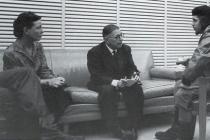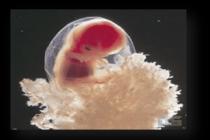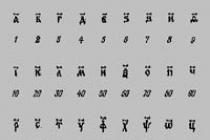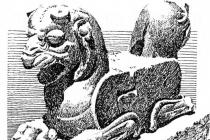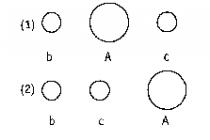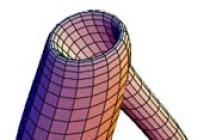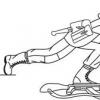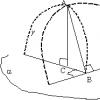In order to make a beautiful ceiling in your home, it is not enough just to choose what material to use for its decoration. It is imperative to think about what the lighting will be - and not even so much the main thing as the backlight. With its help, you can decorate and revive even the most ordinary, unremarkable ceiling.
If the structure is multi-level and has a complex configuration, the backlight will mark the boundaries of the levels and focus on its graceful forms. Correctly selected in shape, power and quantity of lighting fixtures will help to solve this problem - including the illumination of the ceiling plinth.
For our part, we will try to help figure out which option to give preference to, and how to carry out harmonious illumination of the interior with our own hands.
Types of backlight sources
Looking at the examples presented in the article, it becomes clear that perimeter lighting is not the only design technique that can be used when. Much depends on its shape, as well as the material used for installation.
Therefore, we will try to consider all the main options - and you yourself will decide what is best specifically for your premises. As a sample, we bring to your attention a photo with the most interesting solutions.
LED elements
This type of artificial lighting gained popularity thanks to the development and implementation of LEDs with unusual brightness. The most weighty argument in their favor was, unusual for other lamps, efficiency.
- The power consumption of products of the previous generation (incandescent, arc, luminescent) is 5-6 times higher than the consumption of LED lamps with the same quality of lighting. Their relatively low price also plays a role.
- And even this is not the most important thing! The lifespan of LED lamps is such that the savings in replacement exceed the reduction in electrical energy. This is very noticeable in mass use (for example: in street lighting).
- They also have a lot of advantages. This is both sufficient strength, and small heat dissipation, and small dimensions that allow them to be installed anywhere. These lamps contain no mercury and have very low levels of infrared and ultraviolet radiation.
- Using under the illumination, alternating lamps of different colors, you can get the effect of festive illumination.

- That is why the designers have unanimously adopted LEDs not only for outdoor, but also for indoor lighting of premises, as well as illumination of ceilings and other interior elements. Illuminated ceiling skirting boards look so original that your ceiling can be quite simple in design, but look rich.
- LEDs are used in lighting, both in the form of spotlights and tape. This tape looks great on suspended, especially multi-level, ceilings - stretch or plasterboard (see).

- In general, in order to make interesting lighting, it is not at all necessary to make an intricate ceiling structure. It will be nice to simply mount a cornice specially designed for mounting the backlight, which forms a hidden niche around the perimeter.
- This is perhaps the most budgetary option. If no other repairs are planned in your house, the work associated with the installation of LEDs around the perimeter of the ceiling will not take more than two days.
The most acceptable way to illuminate the cornice is to use an LED strip, it is possible in combination with lamps. A little later, we will talk about what kind of ceiling plinth for LED lighting is needed.
What is LED strip
A light-emitting diode (LED) strip is a flexible board, mounted from LEDs remote at the same distance.
- Ribbon, 5m cut, sold rolled into a bay. Its standard dimensions are 3 mm thick and 1 cm wide.

- In order to limit the amount of incoming current, the electrical circuit of the tape provides for the presence of a resistor on it. It works on direct current of 12 volts, sometimes 24V. To connect the tape to the general power supply, a power supply is required.
Advice! The performance of the unit will also depend on the sum of the capacities of all used tapes. If this amount exceeds 50 watts, the PSU will be large and difficult to disguise. Better use a few small blocks.

- Ceiling lighting under the skirting board: brightness and color - regulated by controllers mounted in the tape. It is very convenient that this can be done using the control panel.
- The fixing of the LED strip is very simple: on the back of this product there is a universal tape that allows you to fix it on any flat and smooth surface.

There are two modes for the ribbon used: one-color and two-color. In this case, the color saturation can be from cold to warm tone. As the main lighting, such a device cannot be used due to its low light output.
Duralight lamps
Such lamps are a tube with small lamps located inside. Previously, these were ordinary incandescent bulbs.
They looked original, but did not differ in the duration of their service life. Due to one burned out light bulb, it was necessary to change a piece of a tube with adjacent lamps.

With the advent of LEDs, the situation has changed dramatically. They began to be used in duralights, which made it possible to significantly increase the life of the tube, power consumption and brightness of the glow.
Spot illumination

- There are no particularly cardinal differences between this lighting method and the version with ribbons. In this case, the instructions for working with the equipment for installation require careful study. Better yet, entrust the electrical part of the backlight installation to a specialist.
- To achieve the greatest harmony in the interior of the room, neon lighting is placed not only in the ceilings, but also on other structural elements: columns, wall niches, bay windows.
The most harmonious ceiling skirting board with illumination looks in tension structures - especially with a textile or satin fabric, as well as with a matte PVC film. If the ceiling is glossy, then the lighting sources must be closed from above so that they do not reflect on the mirror surface.
Choosing a ceiling plinth for lighting
So, you nevertheless decided to realize your idea of contour lighting in the living room, hallway or kitchen, and even decided on the choice of light sources. It remains to choose the right cornices for this purpose.
You can use a ceiling plinth for lighting, but not every type of it is suitable for this:
- A regular plinth (fillet) is, in essence, a corner overlay, tightly covering the joints between the walls and the ceiling. And you will need a slightly different configuration.
- The cornice, which will be installed with the subsequent installation of the backlight, should not have high sides... This is necessary for the unimpeded passage of light.
- It is not difficult to choose products, here several options are possible. The main thing is to use products made of non-combustible materials.
So:
- It can be a baguette made of polystyrene foam or expanded polystyrene. These types of materials are cheaper, lightweight and easy to install. This choice is quite acceptable if ceiling skirting boards for illumination are used in plasterboard or plastic construction.
- Most often, the backlight is made for stretch ceilings. A polyurethane skirting board is best suited for this purpose. The polymer from which it is made has a high density and complete chemical safety. It is highly flexible, which is very convenient if the perimeter of the room has a complex configuration. Such a cornice is used not only for the ceiling, but also for finishing door and window openings. The polyurethane baguette has a snow-white color, but it can be painted as close as possible to the shade of the ceiling or wall decoration.

- Ceiling polyurethane skirting board with illumination can also be purchased ready-made - the lamps are simply built into the cornice. Sometimes fluorescent lamps are used for this, they are economical. But this does not always look beautiful, since the light sources are located at some distance from each other.
- It is much more convenient to use a ceiling plinth for an LED strip or neon tube. They illuminate the cornice evenly over the entire area of the room, and LEDs also provide the ability to adjust the brightness.
- Curtain rod manufacturers have long thought about how to make them the most convenient for electrical work. For this, the standard shape of the fillet has changed somewhat; it has a small recess in the body for placing an LED strip or a neon tube in it.
Ceiling lighting skirting boards can be shaped like a metal profile. In such a cornice, you can place not only the tape, but also any lamps.
They sell fillets in two-meter lengths. When purchased, their total length should correspond to the perimeter of the room, plus a margin for waste arising from cutting corners.
And now, all the necessary materials have been purchased. Now you can get to work.
Fastening fillets
When it is planned to install eaves lighting, ceiling skirting boards for illumination are mounted in a slightly different way: not close to the joints of the ceiling and walls, but at a distance from them not exceeding 20 cm. This value depends on the height of the room.
- The method of fastening is selected depending on the type of skirting board and the texture of the surface on which it is to be mounted. You can screw the fillet to a tree or MDF with self-tapping screws. For concrete and drywall - putty and glue are used.
- Lighter types of cornices are perfectly fixed with liquid nails glue. Using an assembly gun, it is carefully applied to the back of the skirting board and pressed against the wall surface.
- Conventional polyurethane skirting boards, due to their heavy weight, must be fixed to both the wall and ceiling. But we need access to its internal cavity to install the tape.
- The polyurethane curtain rods, which are specially designed for the lighting device, are attached only to the wall due to their construction. They have recently appeared on sale.
We present several options for their attachment and placement of light sources:
- The sticky side of the LED strip is glued to the wall under the ceiling plinth - the backlight will work as soon as you connect the pieces of products soldered to each other to the power supply. Or you can not solder, but use a connector to connect them.
- It's even easier with a neon tube. It is simply placed inside the cornice. Here, the difficulty lies elsewhere: for current converters, before starting work, special niches are broken through, and. And there you need to apply voltage. How to do this can be seen in more detail in the video.
If you realize that your room needs lighting, you need to install electrical wiring under the ceiling plinth or replace the existing one. And also replace the old switches with newer models (at least 3 keys). This will save you from subsequent repairs for many years.
Today, LED strips are used to create primary or decorative lighting. They blend harmoniously with different interior styles. With the help of LEDs, you can create a special atmosphere, highlight a certain area in the room, emphasize the advantages and hide the imperfections of the room.
To mount such a system, special materials and tools are required. In addition, when installing the tape, you will also need a ceiling plinth. It has certain characteristics. How to choose and install with your own hands a ceiling plinth for an LED strip, we will tell you later in the article.
The purpose of the skirting board
Ceiling skirting board for LED strip is in great demand today. It performs a number of essential functions. More recently, these tapes were mounted on a base without additional elements. However, the appearance of ceiling plinths designed for various lighting devices made it possible to create various decorative techniques when decorating the interior and mounting lighting in a room.
The skirting board is a fillet, in which a special recess is provided for placing an LED strip or other elongated lighting device.
Previously, baguettes were used solely to hide the seam between the ceiling and wall finishing materials. However, now this decor element has received many additional features. Under the skirting board, you can successfully hide the wires from the wiring. They will pass in special cable channels made of non-combustible substances. Themselves the LED strips will be placed in a special recess, which is on the outer surface of the baguette. This technique will allow you to hide the lighting device itself, leaving only the backlight itself. It will protrude with its rays without creating a bright outline from the LED strip, which significantly increases the aesthetics of the finish.
In addition to skirting boards, there are also profiles for LED strips for the ceiling. With their help, they create different shapes, allowing you to emphasize the beauty of the forms of multi-level structures. The principle of such products is similar to a skirting board. They also have a depression, but they can bend to follow the contours of the object.
The choice of baseboard material
When choosing the best ceiling plinths, you should consider their varieties. First of all, such baguettes differ in the material from which they are made. The most inexpensive structures are expanded polystyrene fillets. There are many skirting boards in this category. They differ in shape, texture and color. This variety will allow you to choose the best option for the existing style and interior design.

Styrofoam baguettes are easy to install. They are easy to assemble by yourself. Most often, the presented type of products is used in the arrangement of conventional or plasterboard suspended ceilings. In this case, LED backlighting will look harmonious.
If another type of finish is being set up, polyurethane foam fillets can be used. This type of product goes well with stretch ceilings. Polyurethane foam is known for its high environmental performance. It is quite dense, so it is much more difficult to damage it than the previous type of baguettes. Such skirting boards allow you to additionally strengthen the tension structure, giving it a certain rigidity. The presented ones are available in white.
It should be noted that polyurethane skirting boards are highly flexible. They can be used to create complex lighting configurations. On sale are products of this group with recesses for the lighting fixture. There are models with LED strip already built into the skirting board.
Skirting board construction
Today, a rigid and flexible LED strip profile is used to create backlighting. Both presented varieties are distinguished by the presence of a special element in the design. This is a special recess for the LED strip. It must match the dimensions of the lighting fixture. There are ceiling plinths on sale that are designed to accommodate tubular types of lamps. The deepening in them should be larger.

Designs for LED strips have special grooves on the inside. It should be noted that, unlike ordinary baguettes, fillets for installing a lighting device do not adhere tightly to the corner surface. After installation, a certain amount of space remains, which is necessary for the free passage of light rays.
This recess can accommodate the wires for connecting the lighting fixture. The main lighting characteristics will depend on the level at which the diode tape is fixed on the back of the plinth, as well as on the distance from the upper corner of the structure to the ceiling.
Installing an LED strip under the ceiling plinth can create both basic and decorative, diffused lighting. The direction of the rays will depend on the position of the lighting fixture in the baguette. If necessary, with the help of such structures, you can clearly direct the luminous flux or make it accentuated, soft.
The front surface of the baguette may also differ. There are many varieties of textures, shapes and shades of similar products on sale. The type of profile used when creating such elements can be curly or even. In this case, the diode tape can be mounted either on the skirting board itself, or attached to the surface of the base.
Profile types
In addition to skirting boards, special profiles can be used to install the LED strip. They are installed not only in the corners of the room. With the help of such structures, you can designate various decorative elements of an arbitrary shape, create lighting anywhere on the ceiling. On sale are corner, recessed, suspended, cut-in and overhead profiles for LED strip:
- If the tape needs to be laid in curving contours, then corner profiles are used. They can be used to create lighting around the perimeter of a room, a rectangular contour of furniture, on steps, etc.

- Overhead profile types are easy to install. This is a rather flexible product from which you can easily create a rounded shape. It is installed on the base using special glue or self-tapping screws. This is one of the preferred options for self-installing lighting tape.
- Mortise types of structures are more difficult to install. But with their help, you can create various design structures of the original form. This type of profile is able to connect dissimilar finishing materials, for example, chipboard with plasterboard. The tape can be mounted both in the depth of the profile and close to its edge. The cut-in profile for LED strip is similar to recessed structures. However, it has the advantage of having edges. They can hide irregularities that exist on the surface of the substrate. To close the gap, it is recommended to use a cut-in profile. Mortise structures are most often used to create furniture lighting.
- If you need to create the main lighting in a fairly spacious room, hanging profiles are used. A diode tape is embedded in them. The use of such products will allow you to create bright, but at the same time, uniform, diffused lighting.
Profile material
Rigid and flexible profiles for LED strip are on sale. The first group includes structures made of aluminum. These are durable, reliable varieties of ceiling profiles. They can only be laid in a straight line or at an angle of 90º, which somewhat limits their scope.
Aluminum structures are resistant to mechanical damage and have a long service life. The presented products can be easily installed in various floors. Moreover, the procedure is simple. The device of aluminum profiles is sealed, allowing to protect the diode strip from damage, pollution and moisture. The presented type is supplied in constructions with a special screen, which transmits the rays of the tape to the outside.

The plastic profile can be flexible or rigid. It is an affordable, inexpensive material. Although, plastic is less durable than aluminum. It can be easily damaged on impact, causing damage to the lighting fixture. Therefore, such structures should be operated with some caution. But with a sufficiently high softness of the plastic, it is still able to reliably protect the lighting device from moisture and dust.
When installing a flexible plastic profile, it is important to purchase a quality product. It is not recommended to save in this case. Cheap structures in this category can melt, deform under the influence of heating the diode strip.
Varieties of profile screens
The profile for LED strip for stretch ceilings or other types of bases has a screen. It is made of plastic. Such structural elements can be matte or transparent. The choice depends on the type of lighting you want to create in the room.
Devices with a transparent screen practically do not reduce the brightness of the lighting fixture. When applied, a maximum of 5% of the intensity of the rays is lost. The presented type of structures is used to protect the tape from adverse environmental influences. For example, it can be dust, moisture, shock, etc.
Frosted screens allow you to create a subdued type of lighting. They can reduce the brightness of the LED strip by up to 30%. This screen is also used to protect the lighting device from mechanical damage, adverse effects.
It should be noted that profile screens are almost always removable. This is a prerequisite for a comfortable and easy installation of the structure, since in this case the risk of damaging the screen during installation is reduced. They are released in different configurations. They can be located in different parts of the profile, which determines the directionality of the rays of the tape.
LED Strip Light
To understand whether in profile or ceiling plinth, it is necessary to consider several features of the presented electrical appliances. The width of the tape can be up to 8-30 mm. Diodes are located on it with a certain frequency. Their size may vary depending on the type of tape. Resistors are soldered to the tape between the diodes. The average length of the tape is 3-5 m. For a medium-sized room, 5-6 such segments will be required. In theory, they can be connected and connected to one large power supply for the LED strip, which should have the appropriate wattage.
But if you make a connection according to this scheme, it will be extremely problematic to hide the control unit under the baseboard. To simplify the installation technology, a separate rectifier is purchased for each 2 sections. It will have a lower voltage indicator and, accordingly, dimensions.

The power supply for the LED strip is required. This device reduces the input voltage to 12 or 24 V (depending on the needs of the tape). When choosing a unit, it is important to take into account the total power consumption of the diodes and provide a small margin.
The shade of the ribbon glow can be different. There are single-color and multi-color products. The choice depends on the preferences of the owners of the house and the style of the interior. Monotone ribbons have a single glow color, which can be warm or cold. And with the help of multi-colored ribbons, you can create any shade of light. A controller is used to control the mode. It is additionally included in the circuit immediately after the power supply and in front of the tape.
Lighting selection
It should be noted that there are several options for how to lay the LED strip in the ceiling plinth. On the reverse side, it has an adhesive base. With its help, it will not be difficult to fix the lighting fixture in the plinth or profile. The connection of the wires is carried out by the soldering method. For those who do not own this technique, it is recommended to purchase an assembled LED strip.

The brightness of the presented electrical appliances may vary. For decorative, soft lighting, it is necessary to use low-power types of products.
But tapes are also on sale today, the diodes of which can create full-fledged lighting in the room. In this case, it is extremely important to correctly fix the device inside the plinth or profile.
Light intensity
A ceiling skirting board for LED lighting can help create a different luminous flux in terms of intensity. So, to create a bright glow, you need to glue the tape to the very bottom of the fillet recess. It will need to be mounted as close to the wall as possible. In this case, the width of the strip of light will be approximately 10-20 cm.
If the design of the room involves creating soft, diffused lighting, you need to glue the diode tape high, almost at the very edge of the side. In this case, the lighting device will also be located close to the wall. In this case, the width of the luminous flux will be greater (up to 30 cm).
The ceiling plinth can be implemented in a slightly different way. In this case, there are two options - the recess in the plinth may resemble the letter "P" or "G" in shape:
- In the first case, the tape is mounted further from the wall. It is located close to the opposite edge of the depression at the very bottom. In this case, the brightness of the backlight will be maximum. The width of the strip will be up to 10 cm.
- When using a skirting board with a "L" profile, you can create the most diffused lighting. In this case, the diode strip is installed near the wall at the bottom of the recess. The stream width will be up to 50 cm.
Plinth installation
mounted on a prepared clean base with glue or self-tapping screws (this is indicated in the manufacturer's instructions):- It is necessary to determine the distance from the ceiling to the baseboard. The smaller it is, the brighter the backlight will be. The minimum distance allowed is 5 cm and the maximum distance is 20 cm.
- Determine how much clearance there will be between the wall and the baseboard. If it is large enough, you can glue the diode tape after installing the skirting board. This is the preferred option. If the distance is small, you must first install a lighting device in the recess of the baguette.
- Next, carefully, in accordance with the manufacturer's instructions, install the skirting board on the prepared base. In this case, you need to use the building level. You need to start installation from the corner of the wall.
- Now you can check if the LED backlight is working properly. For this, the device is connected to the network.
Having considered the features of the ceiling plinth for the LED strip, its types and installation features, you can independently create high-quality, beautiful lighting in the room.
A skirting board or fillet (as its correct name sounds) for a ceiling completes the finishing of the suspended structure, giving the ceiling an elegant and complete look. It is installed at the final stage of the repair work, when the walls and floor surface are completely repaired. Wanting to transform the interior of the room, its owners prefer to install a ceiling skirting board with lighting, as in the photo.
After installing suspended or tension systems, gaps and crevices remain between the walls and the ceiling surface, which must be hidden or decorated, as well as the unevenness of the upper edge of the pasted wallpaper. The installation of a backlit skirting board is not a difficult type of finishing work, so it can be done with your own hands, without the help of specialists. When installing, you just need to follow the recommendations.
What is a ceiling plinth
Fillets are slats made of different materials with a shaped profile or fittings. Due to the fact that in the domestic market, ceiling plinths are presented in a wide range and varied color palette, they are in great demand among consumers. Fillets are different in width and pattern. It will not be difficult to choose such an element of room decor.

With a plinth for a ceiling of a certain thickness and texture, you can visually change the space. So the installation of a smooth and narrow plank in a small room visually makes it more spacious, and the use of a patterned wide fillet gives a large room coziness and seems to reduce its size. If the installation of lighting is planned, then in this case the plinth is not mounted close to the ceiling canvas, but retreat from it, creating conditions for the passage of the luminous flux by 7-10 centimeters. , polystyrene, and expanded polystyrene.

Experts recommend using a polyurethane ceiling plinth for lighting. should have low sides that will not block the light, and a minimum relief, so that they are less likely to be cleaned of dust. The parameters of the skirting board depend on the height of the room - the higher the room, the wider it should be.
You can buy fillets in a building materials store, having previously calculated the required amount - slats 2 meters long are sold per piece. When making a purchase, the skirting board must be purchased with a margin, since when trimming corners, you cannot do without waste, but it is inexpensive.
An example of the implementation of LED lighting for a skirting board on a stretch ceiling, watch the video:
Preparing the skirting board for installation
At the initial stage, in order to combine the ceiling plinth for hidden lighting in the corners of the room, it must be trimmed correctly. To perform this work, you will need a tool specially designed for this - a miter box, which looks like a U-shaped bar with grooves created in it at certain angles.
Installation of ceiling plinth

It is necessary to glue the plinth from the corners: the cut strips are greased with glue and applied to one another, pressing well to the surface. Excess adhesive is removed with a spatula. When the work in the corners of the room is completed, they proceed to the installation of flat sections. The joints are coated with glue and wiped with a damp cloth. After completing the fixing of the plinth, the lighting is installed.
Selecting skirting lighting
The choice of the type of backlight depends entirely on personal preference. Recently, consumers prefer to mount fluorescent lamps or low power and small diameter. But the latter option has a significant drawback - a so-called "light break" occurs at the junction of the bulbs.

LED backlighting can be implemented in several colors, most often used:
- one-color or two-color mode;
- a combination of tones with different saturations - "cold" or "warm".
Connection and installation
After the plinth is attached and the necessary equipment is purchased for arranging the backlighting, the connection of the LEDs begins. The process of securing the tape is simple. To do this, remove the protective film from the self-adhesive layer, wipe the inner part of the fillet from the dust or debris present there, and soon the ceiling plinth with LED backlighting is almost ready, as it looks, you can see in the photo.
Sometimes during installation, it becomes necessary to cut the tape, this will require ordinary scissors, but cutting is allowed only in the places specially marked on it. For docking, you can solder them together with wires, while observing the polarity, or use connectors. Soldering time in this case cannot exceed 10 seconds, and the temperature of the soldering iron is 250 degrees.
Connecting to LED strips wires
To complete the work and connect with backlight - you need to buy connectors or connect wires to the terminals. It is difficult to make a mistake in this case, since each of the contacts has the necessary marking. For a ceiling skirting board with RGB lighting, as noted above, you need to install a controller, which, together with the power supply, should be hidden behind the skirting board.
The installation of a polyurethane fillet with LED backlighting will take a maximum of one day, provided that no repairs are underway in the room - they have already been completed or there is no need for repairs at all.
Illuminated brings a touch of originality and exclusiveness to the interior of the apartment. You can decorate your own home in this way with your own hands. However, you need to know, and a suitable light source for it.
The installation of such a baguette is also carried out according to certain technologies and is somewhat different from. How to properly mount the molding and the lighting itself, read further in the article.
Glowing skirting board in the interior of the apartment
Fillet illumination can produce light of one color or several. Both of these options look quite aesthetically pleasing and original. In this case, the emitted flux can also have different intensities. The choice of color and brightness of the backlight depends solely on the design features of the apartment.





Such decor can be used for a ceiling trimmed with almost any material. However, this design solution looks most attractive in combination with plasterboard and stretch ceilings. Very often, such a baguette is complemented by such a type of decor as backlit.

The LED ceiling skirting board can be combined very well with the floor
How to install a baguette under the backlight
First of all, of course, you need to purchase the ceiling plinth itself, as well as a light source. To date, several varieties are produced.

Ceiling skirting board with lighting. Photo of baguettes of different shapes
Fillet and backlight selection
Most often, foam or foam is used under the backlight. The latter option is preferable, since, when heated, it does not emit toxic substances and is flexible.

Polyurethane skirting board, even when heated, does not emit substances hazardous to health
On a note: On sale you can find a polyurethane ceiling skirting board with illumination with an already built-in light source. The tape is located in a groove on the front surface of the baguette.Luminescent, neon and halogen equipment can be used as a light source. However, the most popular option is LED backlit skirting boards. The fact is that it does not heat up and gives a uniform, eye-pleasing light.

LEDs can give a luminous flux of any color
How to properly mount a baguette for hidden lighting
Fillet installation is carried out in several stages:
- The wall surface in the immediate vicinity of the ceiling is cleaned of dirt and carefully leveled.
- Further, an orientation line is drawn along the perimeter of the wall. It should be drawn so that the upper edge of the planks after installation does not reach the ceiling surface by about 10 cm.

The distance from the ceiling to the top edge of the baguette must be at least 5cm. In this case, the light will come out freely.
- The next step is to start gluing the skirting board for hidden lighting. Foam plastic is attached to glue designed for foam plastic, polyurethane - to liquid nails. The ends of the planks are in the corners.
- Next, the joints of the polyurethane plinth are putty and the place where it fits to the wall from below. If necessary, the baguette for indirect lighting is primed and painted.

To trim the edges of the planks at an angle of 45g, you need to use a miter box
LED ceiling skirting board: how to install the tape
The tape is very easy to install. There is a film on its seamy side, which must be removed, thereby revealing the adhesive layer. Further, the tape is simply pressed tightly to the wall surface.
The standard tape is sold in bobbins of five meters. Of course, during the installation process, you will need to dock the individual elements. Connect them by soldering the wires (observing the polarity).

The elements are connected by soldering the wiring
Important: Soldering time cannot exceed 10s. In this case, you cannot warm up the soldering iron to a temperature above 250g.LED elements are cut only according to the marks applied by the manufacturer.

Installation of illuminated ceiling plinth. They cut the LED strip exclusively according to specially applied marks on it
After the entire perimeter of the room is covered with tape, you can connect it to the power supply. This is also done by soldering wires or using special connectors. The block itself is connected to the household network by means of clemenniks.
Important: The block has two connectors at the output - L + and N-. The phase should be connected to L +, zero - to N-. Power will subsequently be supplied through a standard switch.Most often, the power supply is small (if there are not too many connected tapes) and it is not difficult to hide it behind the baguette itself.

The LED power supply is usually small.
Often, LED lighting for skirting boards is multi-colored. In this case, an RGB controller is installed between the tape and the block. It is also recommended to hide it behind a baguette.
As you can see, backlit by yourself is quite possible. However, if you are not particularly confident in your own abilities, it is better to stick the baguette with your own hands, and entrust the installation of the tape to a specialist.
To radically redesign a room, you can install a backlit ceiling plinth. Unlike installing a backlit false ceiling, a backlit baguette requires a lot less effort, while the final result in terms of design will come out just as well. Below we will describe how to illuminate the ceiling with an LED strip under the baseboard on our own.
What are skirting boards
It is worthwhile to understand in detail what constitutes a polyurethane ceiling plinth - the most important element of ceiling decoration.
A baguette, or classic skirting board, is a corner strip that masks the joint between the ceiling and the adjoining wall. In our case, if it is planned to install a plinth with an LED strip, then it is not installed directly to the ceiling, but an indent of 70-100 mm is made from it in order to be able to study the light from the tape hidden in the lumen.
On sale there are ceiling plinths made of polyurethane, foam and polystyrene foam, but for contour lighting it is best to use the first option.

From a design point of view, it is better if the skirting board has a low side with minimal relief. Highly embossed skirting boards will quickly become clogged with dust and require frequent cleaning. When choosing a skirting board for an LED strip, the height of the room should also be taken into account - for higher ceilings, a skirting board of greater width is required.
You can buy a ceiling plinth at any hardware store. Having decided on the design, the required amount of plinth is calculated. It is implemented in 2-meter strips per piece, so it is quite simple to calculate the amount of material.
It is worth noting that in any case, it will be an ordinary ceiling, or with backlighting, it is important to provide a small margin, since material waste will in any case arise when the corners are adjusted. The skirting board is relatively inexpensive, so this shouldn't be a problem.
After the ceiling plinth for the LED strip is selected, the question arises of how to fix it, and how to properly cut the corners - we will talk about this further.
Rules for trimming the corners of the ceiling plinth
To make the joints in the corners even, you need to know how to trim them correctly. For this, a special tool was invented - a miter box - this is a kind of U-shaped bar with cuts made at different angles.

You need to use the miter box in this way:
- First you need to make a template. We spread two small pieces of plinth in the miter box and make cuts at the angle we need.
- In order to cut the polyurethane skirting board, you can use a construction knife or a metal saw. You need to cut the material in slow movements with minimal pressure to avoid the appearance of chips.
- We join the resulting dough pieces on the ceiling, and check the correctness of the template made for the presence of cracks.
- Using a ready-made template and a miter box, we trim the plinth in all corners of the room.
A baguette for illuminated ceilings is attached by gluing it to the wall.
We carry out installation of skirting boards
The fixing of the ceiling plinth, behind which hidden lighting will be laid at the end, should be carried out in a room in which the repair has already been completely completed. It is allowed to glue the skirting board both on the wallpaper and directly on the wall, if wallpapering is planned after the installation of the skirting board.

We install the plinth in the following sequence:
- We mark the main line on the wall, making an indent from the ceiling - about 100 mm. The skirting board will be glued along this line. Use a building level to control horizontal evenness.
- The installation site is carefully primed before pasting.
- If there is no wallpaper on the walls, then a diluted putty is used to adhere the plinth to the wall. Alternatively, you can use a special adhesive for polyurethane or construction acrylic.
- The gluing of the ceiling cornice under the LED strip starts from the corners. Apply glue to the pieces of the skirting board cut according to the template and press them to the corner. Excess glue can be removed with a spatula.
- After the corners, you can start attaching even pieces of the baseboard. Fill the joints between the skirting boards with an adhesive mixture - remove the excess with a damp cloth.
After the entire plinth is securely fixed, proceed to the installation of the backlight.
Skirting lighting
The type of backlighting will depend on your tastes and preferences.
Often, the following can act as a backlight:
- fluorescent lamps of low power and diameter;
- LED strips.

By and large, you can choose any of the options, however, it should be borne in mind that fluorescent lamps have one important drawback - light dips are noted at the junction of two lamps. Therefore, if you want to get a perfectly uniform illumination, lay the LED strip on the ceiling under the skirting board.
As LED strips you can use:
- Magna S (brighter varieties - Magna 2S and Magna 4S, for many they may be too bright);
- Magna L and Magna 2L;
- Magna RGB.

To control RGB backlighting (a tape that can form any spectrum of light), you will need to purchase an RGB controller. Not bad devices are the models from LEDX Radio with Traxon Movies remote control. Naturally, you can purchase models with similar characteristics in a similar price range.
It should be noted that the power of the power supply unit will be determined by the total power of all installed tapes. If you need a PSU with more than 50W, it is best to install several smaller PSUs so that they can be easily hidden behind the skirting board.
Backlight connection and installation
If the cornice for the LED strip is glued, and the necessary backlight control device has been purchased, then you can start connecting the LEDs. This is the last step, after which the ceiling will shine with all the colors of the rainbow.
- By itself, the installation of an LED strip is a fairly simple task. We remove the protective film from the self-adhesive layer, remove dust and debris from the inside of the skirting board, start attaching the tape - this will take just a few minutes.
- In the process of installing a skirting board for backlit stretch ceilings, it may be necessary to trim the tape (read: "How to make a skirting board for an LED strip on the ceiling - design options, do-it-yourself installation rules"). For this, ordinary scissors are suitable. The only caveat is that the cuts should be made according to special marks on the tape.
- Separate parts of the tape are interconnected with special connectors. However, if there are none, or their quality is unsatisfactory, you can simply take a soldering iron and solder the tape segments together with wires, taking into account the polarity.

It should be noted that in the case of soldering LED strips, the temperature of the soldering iron should not exceed 250 ° C, and the soldering time should not last longer than 10 seconds.
- You can connect the tape to the power supply with the same connectors, or simply take the wires and connect them to the appropriate terminals. It is difficult to make a mistake here, since all contacts are marked.
- You will need a special controller to connect RGB tape.

